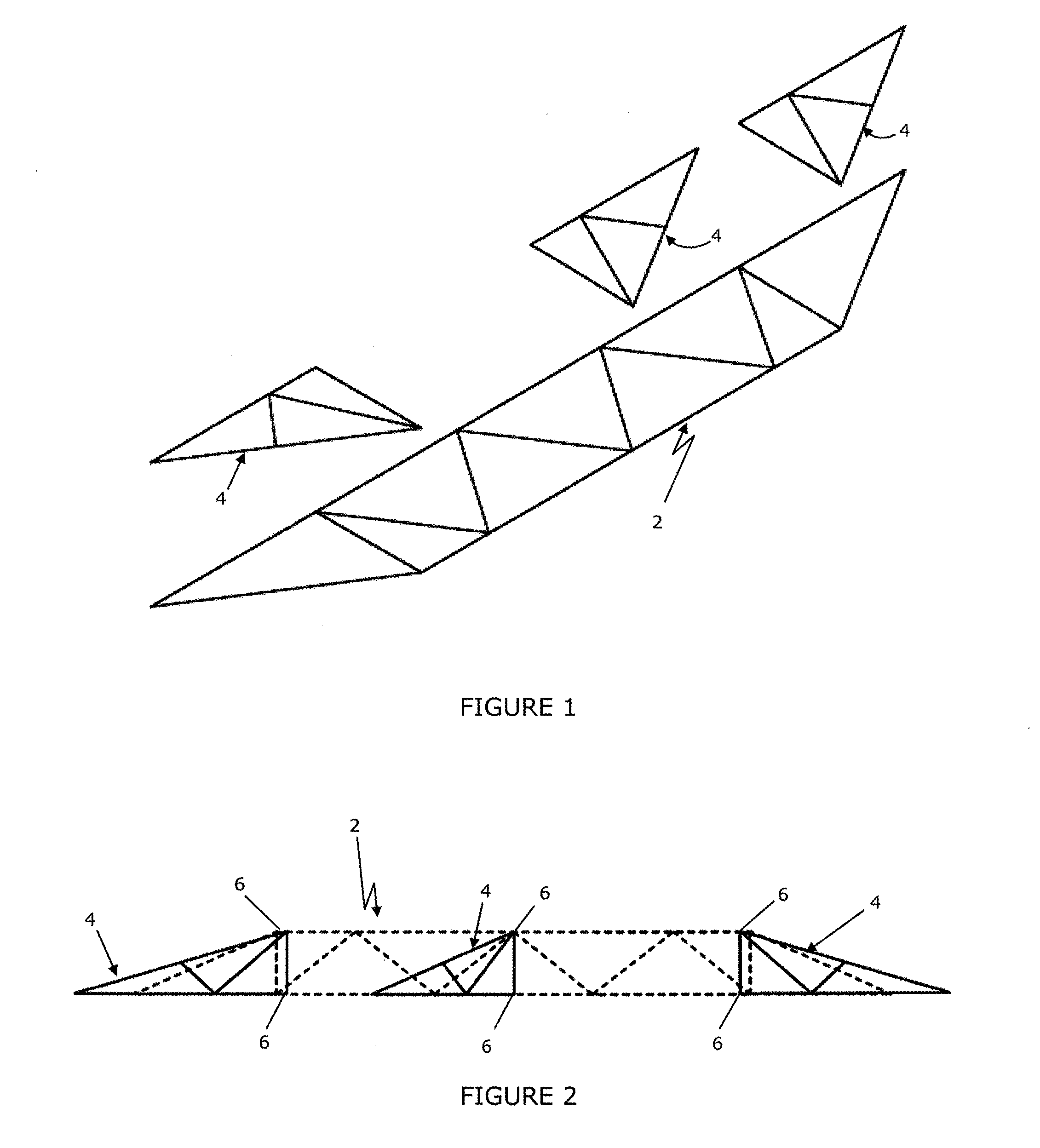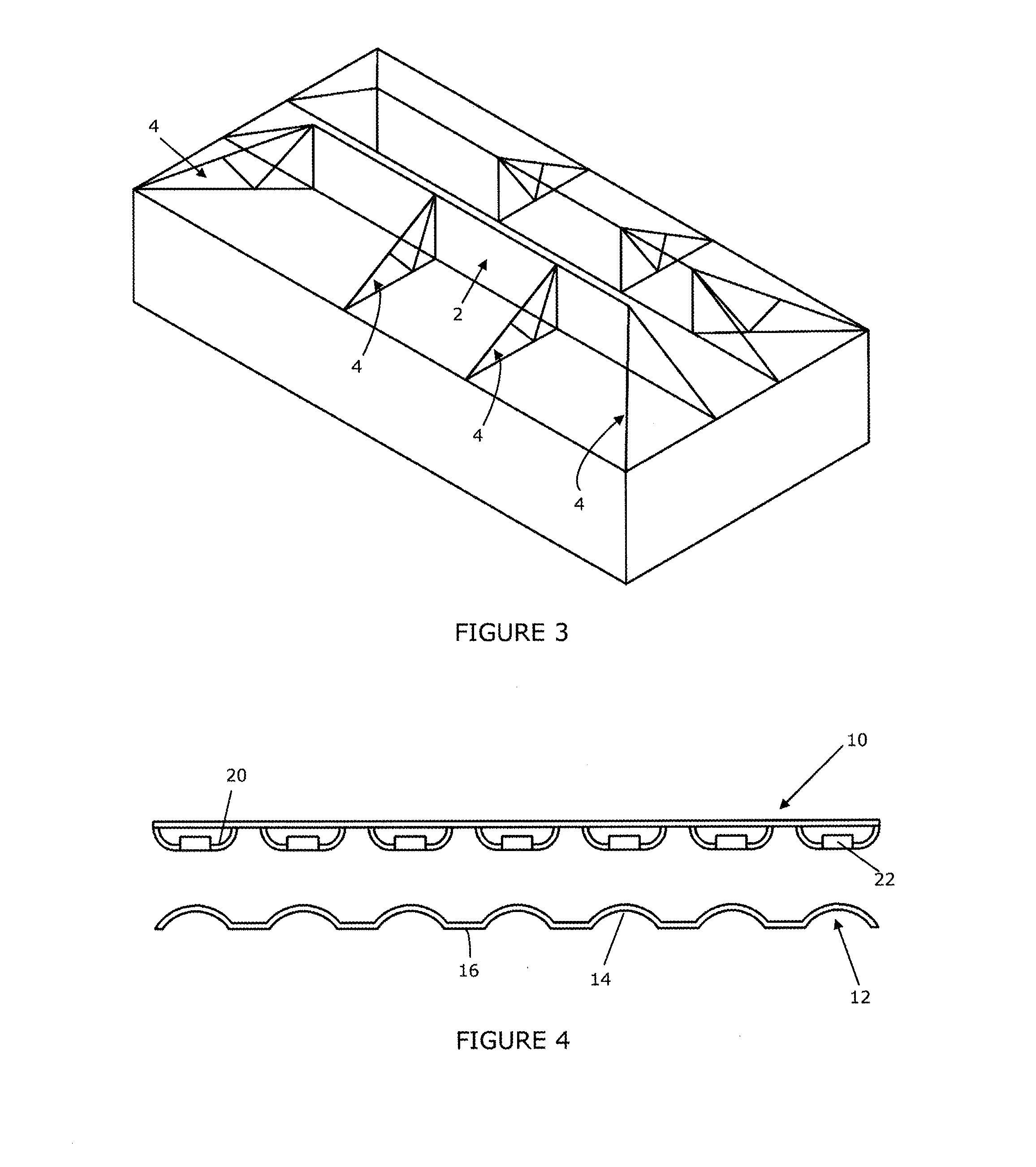Trusses for use in building construction and methods of installing same
a technology for building construction and trusses, applied in the direction of girders, joists, building roofs, etc., can solve the problems of increasing complexity, affecting the work efficiency of installers, and requiring a lot of skill which would otherwise be needed,
- Summary
- Abstract
- Description
- Claims
- Application Information
AI Technical Summary
Benefits of technology
Problems solved by technology
Method used
Image
Examples
Embodiment Construction
[0029]In an embodiment according to the first aspect of the present disclosure, prefabricated trusses which, in the assembled roof structure are to be attached to and extend transversely from another prefabricated truss, usually one of the larger trusses and which will be referred to for simplicity as a “main” truss are assembled to the main truss by hinges as part of the pre-fabrication process. The hinges provide a secure connection between the main truss and the other trusses, referred to for simplicity as “supplementary trusses”, and permit the supplementary trusses to be swung from a position in which a face of the supplementary truss lies adjacent a face of the main truss for transportation to site on the bed of a truck and lifting into position on site, typically by means of a crane. When the main truss is in position on the top plate or other underlying structure, the supplementary trusses can then be swung outwardly from the face of the main truss into its required orientat...
PUM
 Login to View More
Login to View More Abstract
Description
Claims
Application Information
 Login to View More
Login to View More - R&D
- Intellectual Property
- Life Sciences
- Materials
- Tech Scout
- Unparalleled Data Quality
- Higher Quality Content
- 60% Fewer Hallucinations
Browse by: Latest US Patents, China's latest patents, Technical Efficacy Thesaurus, Application Domain, Technology Topic, Popular Technical Reports.
© 2025 PatSnap. All rights reserved.Legal|Privacy policy|Modern Slavery Act Transparency Statement|Sitemap|About US| Contact US: help@patsnap.com



